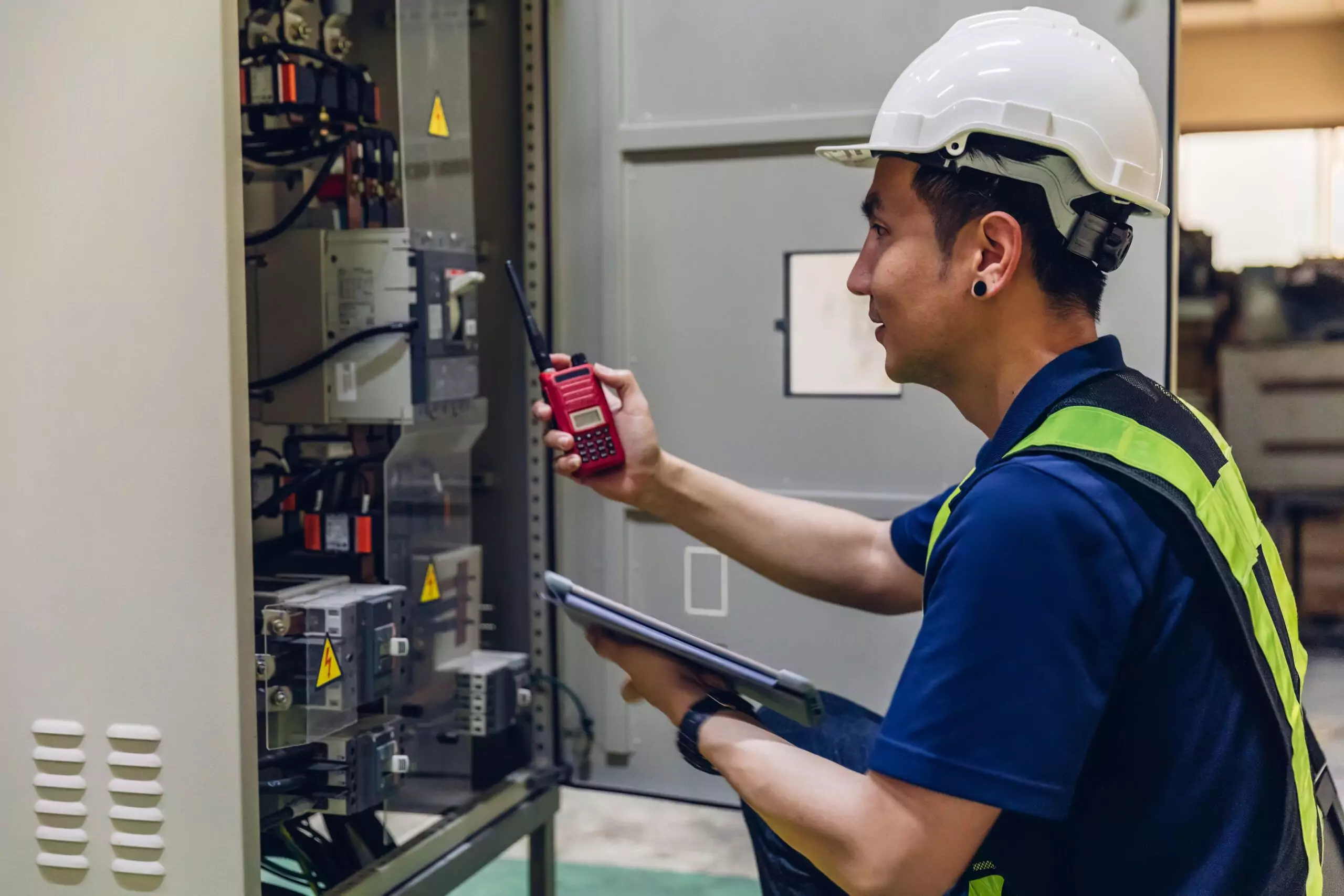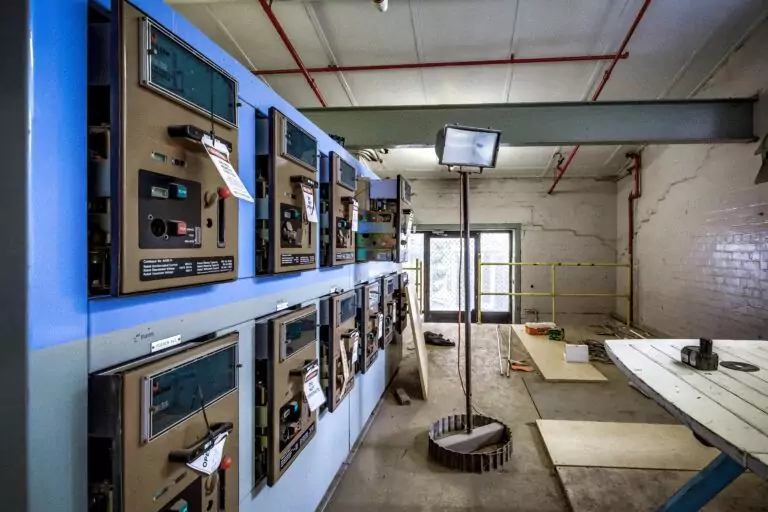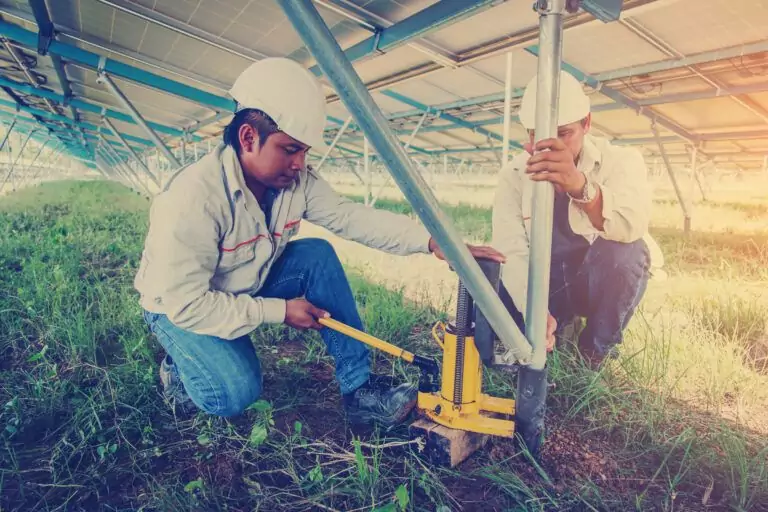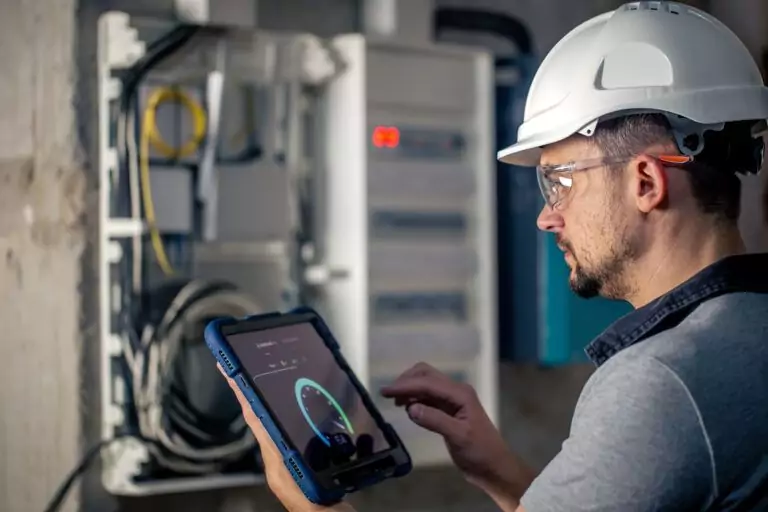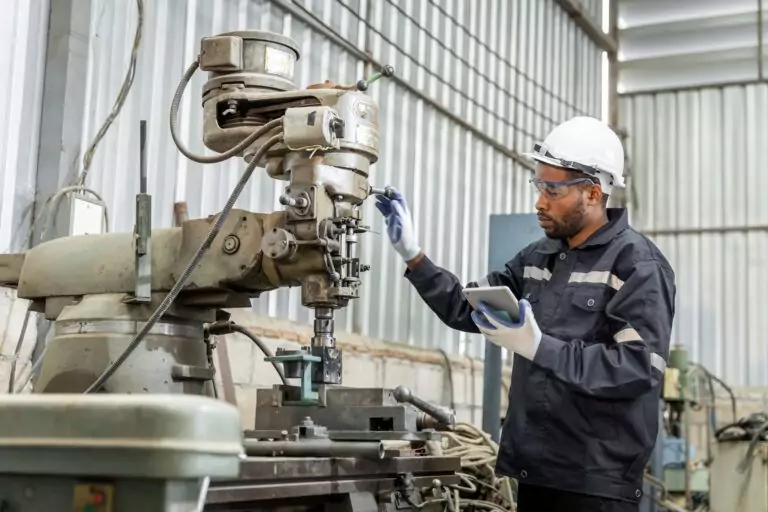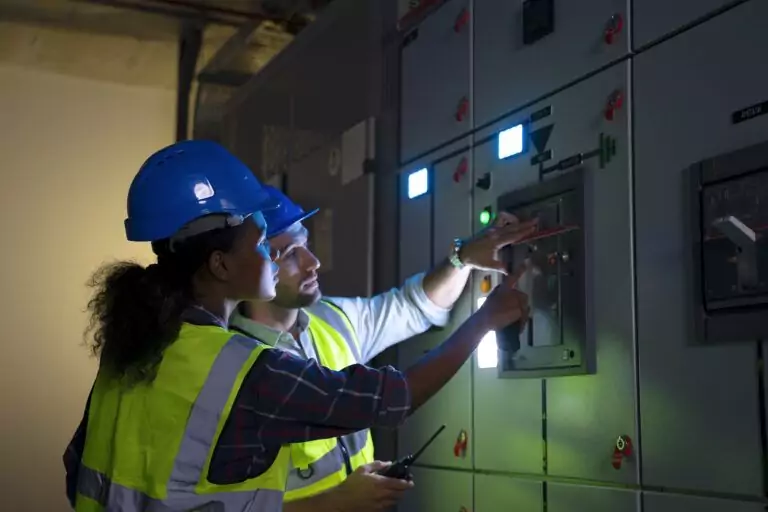When setting up or upgrading a factory, one of the key decisions you’ll face is choosing the best voltage level for your electrical distribution system. It’s not just a technical choice; it’s about ensuring your operations run smoothly, safely, and economically. High, medium, or low voltage?
Each has its place, depending on your factory’s size, machinery, and power needs. This article explores why selecting the right voltage is crucial for minimising energy loss, enhancing safety, and controlling costs. With support from professionals offering electrical engineering services, businesses can assess their unique requirements and implement tailored voltage strategies for optimal performance. We’ll explore the common voltage levels used in factories, weigh their pros and cons, and provide insights on making the best choice for your situation.
Whether you’re a seasoned engineer or a factory manager planning for future expansion, understanding the role of voltage in your operations is crucial for a well-oiled industrial setup. Join us as we unravel the complexities of voltage selection to help you optimise your factory’s electrical system for efficiency, safety, and sustainability.
Why is Choosing the Right Voltage Level Important?
Choosing the right voltage level is crucial for several interconnected reasons, all aimed at ensuring the efficient, safe, and cost-effective operation of electrical systems. At the heart of this importance is the goal of minimising energy losses during transmission, which is directly influenced by the chosen voltage level. High voltage levels are preferred for long-distance transmission as they reduce energy losses by allowing the use of lower currents for the same power transfer, thus improving overall system efficiency. An integrated industrial engineering firm can provide the technical insight and system-wide perspective needed to guide these decisions.
It is a decision that requires a thorough understanding of the technical requirements, the operational environment, and the specific needs of the end-use application to ensure the optimal performance of the electrical system.
Safety
Ensuring safety is paramount when choosing the right voltage level for electrical systems. The proper voltage selection mitigates the risks of overvoltage or undervoltage situations, which can lead to equipment damage or failure, and poses serious hazards to human safety. By adhering to the appropriate voltage levels, electrical systems operate within their designed parameters, significantly reducing the likelihood of accidents and ensuring the protection of both people and property.
Efficiency
The efficiency of an electrical system is directly influenced by selecting the correct voltage level. High voltage levels are particularly beneficial for transmitting power over long distances, as they allow for lower current flow for the same amount of power, thereby reducing energy losses due to resistance in the conductors. This efficient transmission ensures that the maximum amount of generated power reaches its intended destination with minimal loss, making the overall electrical system more efficient and reliable.
Cost-effectiveness
Choosing the right voltage level impacts the cost-effectiveness of electrical systems in both their construction and operational phases. High-voltage transmission requires less conductor material for a given power transfer capacity, which can significantly reduce initial infrastructure costs. Moreover, the reduction in energy losses associated with high voltage levels translates into lower operational costs over the system’s lifespan.
Therefore, the correct voltage selection not only enhances system performance but also contributes to substantial economic savings, making it a critical factor in the design and operation of electrical systems.
Common Voltage Levels in Factories
Factories utilise various voltage levels to match their power demand, equipment needs, and safety regulations. Each voltage level is chosen based on specific factory requirements, considering factors like machinery type, distribution distance, and future expansion plans, ensuring operational efficiency, safety, and cost-effectiveness. A reliable engineering consultant can help assess these factors and guide the selection process to ensure the system meets both current and future operational goals.
Low Voltage (LV) – Below 1kV
Low voltage is defined as being below 1kV. It is primarily used for general power distribution within factories, powering small machinery, lighting, heating, and electrical outlets. LV is the most accessible voltage level, catering to everyday operational needs and ensuring safety in work environments.
Medium Voltage (MV) – 1kV to 35kV
Medium voltage ranges from 1kV to 35kV. It is utilised for heavier equipment and systems that demand higher power, such as industrial motors and large machinery. MV strikes a balance, offering more power for industrial operations while maintaining manageable safety and installation requirements.
High Voltage (HV) – Above 35kV
High voltage is classified as above 35kV. Although less common in standard factory settings, HV may be necessary for very large facilities or those with specific high-power needs, including on-site power generation or substations. HV distribution requires specialised installation, maintenance, and safety protocols due to its power and associated risks.
Determining the Best Voltage for a Factory
Determining the best voltage for a factory involves assessing power demand, considering future expansion, and evaluating distribution distance. This comprehensive assessment ensures that the selected voltage level optimises efficiency, safety, and cost-effectiveness for the factory’s operations.
Assess Power Demand
Assessing power demand is crucial for selecting the appropriate voltage for a factory. It involves calculating the total power consumption and understanding peak load requirements. This step ensures the chosen voltage level can efficiently meet the operational needs of the facility.
Consider Future Expansion
Considering future expansion is essential in determining the best voltage for a factory. Planning for potential growth allows for the selection of a voltage level that can accommodate increased power needs without extensive modifications, ensuring long-term cost-effectiveness and operational efficiency.
Evaluate Distribution Distance
Evaluating the distribution distance within a factory is key to choosing the right voltage level. Longer distribution distances may necessitate higher voltage levels to minimise energy losses during transmission. This consideration helps in optimising the overall energy efficiency of the factory’s electrical system.
Factors Influencing Voltage Level Choice
Several critical factors influence the choice of voltage level for a factory. Together, these factors guide the decision-making process, ensuring that the selected voltage level aligns with operational requirements, safety standards, and efficiency goals.
Machinery and Equipment Type
Machinery and equipment type significantly influence the choice of voltage level in a factory. Different types of machinery have specific power requirements, dictating the need for either low, medium, or high voltage to operate efficiently and safely.
Factory Layout and Size
Factory layout and size impact the voltage level selection by determining the distribution distance of electricity. Larger factories with extensive layouts may require higher voltage levels to minimise energy losses during power transmission across long distances.
Local Regulations and Standards
Local regulations and standards are critical in guiding the voltage level choice. Compliance with these regulations ensures that the factory’s electrical system adheres to safety and operational standards, influencing the decision towards a voltage level that meets these requirements.
Advantages of Medium Voltage (MV)
Medium voltage (MV), ranging from 1kV to 35kV, offers significant advantages for factory distribution systems. These advantages make medium voltage an attractive option for industrial applications seeking to balance power needs with cost and safety considerations.
Reduced Energy Losses
Reduced energy losses are a hallmark of medium voltage (MV) systems. By enabling power transmission over longer distances with minimal loss, MV systems ensure efficient use of generated power, making them ideal for sprawling industrial facilities.
Lower Costs
Lower costs result from the efficiency of MV systems. The initial investment in infrastructure and the ongoing operational expenses are reduced due to the decreased energy losses and the efficient distribution capabilities of MV systems.
Enhanced Safety
Enhanced safety is achieved through the specialised design and installation standards of MV systems. These systems come with protective measures and equipment designed to handle medium voltage levels, reducing the risk of electrical hazards and ensuring a safer environment for factory operations.
Challenges of High Voltage (HV) Distribution
High voltage (HV) distribution, while beneficial for long-distance transmission and large-scale power needs, presents several challenges. These challenges necessitate careful planning and consideration when implementing HV distribution to ensure safety, reliability, and cost-effectiveness.
Higher Installation Costs
Higher installation costs are a key challenge of high voltage (HV) distribution. The complexity of HV systems requires more expensive equipment and infrastructure, leading to higher initial investments.
Specialized Maintenance Staff
Specialised maintenance staff is essential for HV distribution due to the technical complexity and safety risks. Trained professionals are needed to ensure the system operates safely and efficiently.
Increased Safety Measures
Increased safety measures are imperative in HV distribution to protect against electrical hazards. This includes comprehensive protocols and safety equipment tailored to manage the elevated risks associated with high voltage operations.
Ensuring Safety with HV/MV Distribution
Ensuring safety in high-voltage (HV) and medium-voltage (MV) distribution systems is critical to identify and rectify potential hazards before they lead to incidents. These measures collectively contribute to a safer working environment, minimising the risk of accidents and enhancing the reliability of HV and MV distribution systems.
Regular Maintenance and Inspections
Regular maintenance and inspections are crucial for ensuring the safety and reliability of high-voltage (HV) and medium-voltage (MV) distribution systems. These practices help identify and address potential issues before they escalate into serious hazards.
Staff Training on HV/MV Safety
Staff training on HV/MV safety is essential to equip workers with the necessary knowledge and skills for safely operating and maintaining high and medium voltage equipment. Well-trained staff can significantly reduce the risk of accidents.
Protective Equipment and Barriers
Protective equipment and barriers play a vital role in safeguarding personnel from electrical hazards associated with high-voltage (HV) and medium-voltage (MV) systems. Implementing these safety measures helps prevent direct contact with live components, enhancing overall workplace safety.
Role of Energy Efficiency in Voltage Selection
Energy efficiency plays a pivotal role in the selection of voltage levels for factory distribution systems. Choosing the appropriate voltage level is key to minimising energy losses during transmission and distribution. High voltage (HV) and medium voltage (MV) systems, for instance, can transmit power more efficiently over long distances compared to low voltage (LV) systems, reducing energy wastage.
The role of energy efficiency in voltage selection encompasses operational, environmental, and regulatory dimensions, guiding factories towards more sustainable and cost-effective electrical system designs.
Impact on Operational Costs
Impact on operational costs is a significant factor in voltage selection. Opting for a voltage level that minimises energy losses during transmission can lead to substantial savings in electricity costs, making energy efficiency a key consideration in reducing overall operational expenses.
Environmental Considerations
Environmental considerations play a crucial role in voltage selection. Energy-efficient systems not only reduce operational costs but also lower carbon emissions, contributing to environmental sustainability. Selecting the right voltage level can therefore align a factory’s operations with broader ecological goals.
Compliance with Standards
Compliance with standards is essential in the selection of voltage levels. Adhering to energy efficiency standards and regulations ensures that factories not only optimise their electrical systems for cost and performance but also meet legal and industry requirements, safeguarding against potential penalties and enhancing credibility.
Optimizing Power Distribution for Your Factory’s Success
Selecting the right voltage level for your factory’s electrical distribution system is an essential decision that affects everything from safety to efficiency and long-term operational costs. Whether you’re choosing between low, medium, or high voltage, understanding the power demands, factory layout, and potential for future expansion is key. The correct voltage selection ensures minimal energy loss, adherence to safety standards, and optimised performance, setting the foundation for smooth and sustainable factory operations.
At Vista Projects, our expertise in industrial electrical systems allows us to guide you through the complexities of voltage selection, ensuring that your factory’s power distribution is efficient, safe, and future-ready. Our team can help design and implement solutions tailored to your specific needs.
Ready to make the right choice for your factory’s power needs? Contact Vista Projects today to get expert advice on voltage selection and optimisation for your facility.
